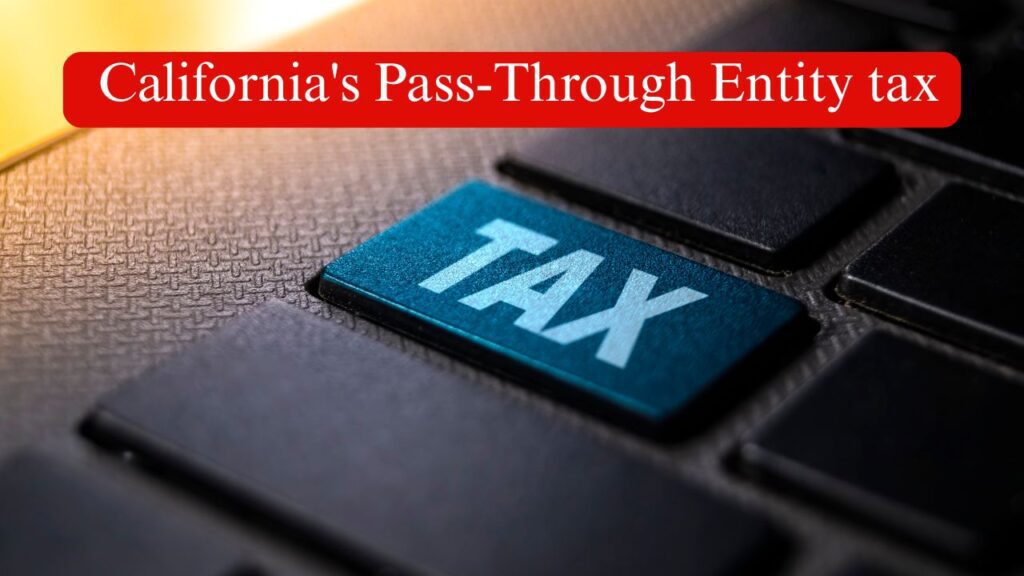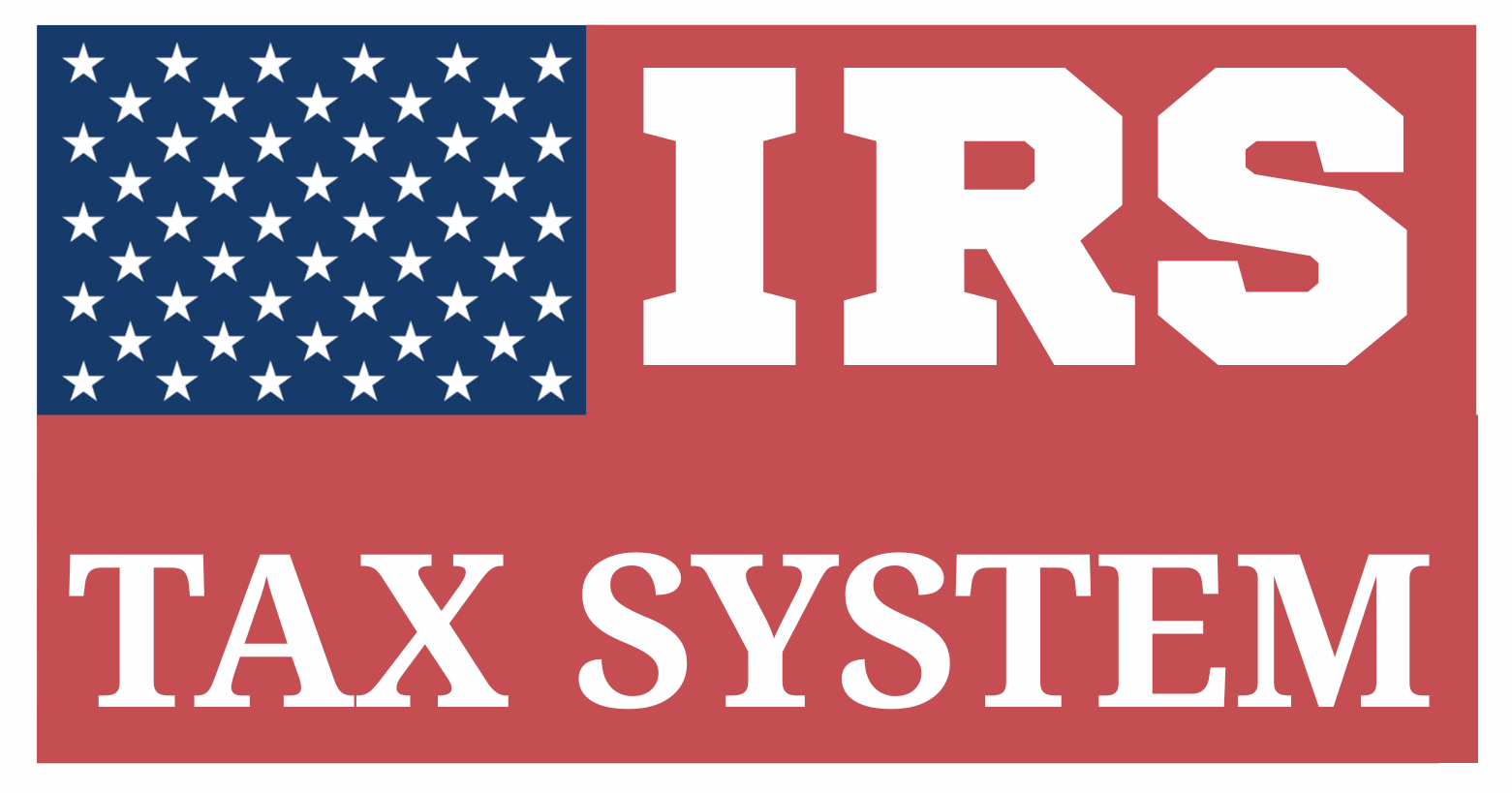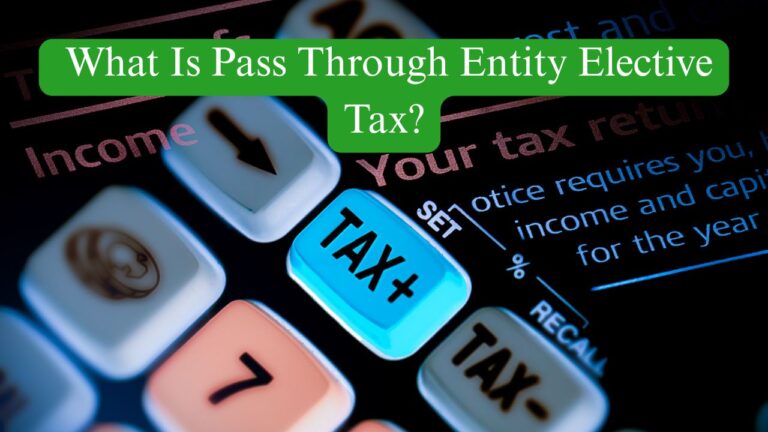California Pass Through Entity Tax: Best Guide 2025
Table of Contents
The California Pass Through Entity Tax is a state-level elective tax designed to help owners of pass-through entities, such as partnerships, S corporations, and LLCs treated as partnerships. In order to lessen the impact of the federal $10,000 cap on state and local tax (SALT) deductions, owners of pass-through companies, such as partnerships, S corporations, and LLCs regarded as partnerships, can implement the California Pass-Through Entity (PTE) Tax, a state-level optional tax.
This elective tax was introduced under Assembly Bill 150 (AB 150) and later expanded and modified by Assembly Bill 158 (AB 158) and Senate Bill 113 (SB 113) to align with IRS Notice 2020-75, which allows state-level taxes paid by pass-through entities to be deducted at the federal level.
Save More with California Pass-Through Entity Tax – Here’s How!

Under California’s PTE tax regime, For consenting owners who are liable for California personal income tax, qualified entities may choose to pay a 9.3% tax on the pro-rata or distributive portions of income under the state’s PTE tax framework. In exchange, those consenting owners receive a nonrefundable credit on their California personal income tax return, effectively reducing their individual tax liability by the amount of PTE tax paid on their behalf.
The election must be made annually on a timely filed original return, and to participate, an entity must have at least one qualified taxpayer owner. Payments for projected PTE taxes must also be made in two installments, with the first installment due by June 15 of the taxable year (either $1,000 or 50% of the PTE tax from the previous year, whichever is higher) and the second installment due by March 15 of the following year with the PTE return.
California’s PTE tax offers a strategic benefit to many business owners by enabling them to deduct state taxes at the entity level for federal purposes, which can result in significant tax savings. However, it’s important for entities and their owners to review eligibility requirements, meet payment deadlines, and coordinate closely with tax professionals to maximize this elective tax’s benefits.
Legal Basis of the California Pass-Through Entity (PTE) Tax
The legal basis of the California Pass-Through Entity (PTE) Tax originates from legislative efforts to provide relief from the federal limitation on the deductibility of state and local taxes (SALT). This elective tax was established through Assembly Bill 150 (AB 150), which was signed into law on July 16, 2021, and subsequently expanded and clarified by Senate Bill 113 (SB 113) in 2022.
AB 150 created a new elective tax regime under Revenue and Taxation Code Sections 19900–19906, allowing eligible pass-through entities to pay income taxes at the entity level on behalf of their qualified owners. This design enables those owners to bypass the federal $10,000 SALT cap imposed by the Tax Cuts and Jobs Act (TCJA) of 2017, as taxes paid by entities are fully deductible at the federal level.
SB 113 further refined the legal framework by expanding eligibility to a broader group of owners, revising income calculation rules, and clarifying how PTE tax credits are applied to individual returns. Significantly, these legislative measures brought California’s tax treatment into compliance with IRS Notice 2020-75, which affirmed that state and local income taxes paid by a S corporation or partnership are tax-deductible for calculating the entity’s non-separately determined income or loss.
for calculating the entity’s non-separately declared income or loss . Together, AB 150 and SB 113 provide the statutory authority for California’s PTE tax, establishing a voluntary mechanism for pass-through entities to help their owners achieve greater federal tax deductibility while complying with both state and federal law.
Eligibility – Who Can Elect the California PTE Tax
Eligibility to elect the California Pass-Through Entity (PTE) Tax is specifically defined by state law and applies to certain business entities and their owners. Only entities and individuals that meet the established criteria under the California Revenue and Taxation Code Sections 19900–19906 may participate in the elective tax program.
Eligible Entities
The following pass-through entities may elect to pay the California PTE tax:
- S corporations
- Partnerships
- Partnerships and Limited Liability Companies (LLCs) that are taxed as either S corporations or partnerships
These entities must be required to file a California tax return and must not be publicly traded or disregarded for tax purposes (e.g., single-member LLCs).
Ineligible Entities
Entities that are not taxed as S corporations, publicly traded partnership:
- Publicly traded partnerships
- Disregarded Entity for federal income tax approach
- Corporations that are not taxed as S corporations
- Sole proprietorships
Eligible Owners (Qualified Taxpayers)
Only qualified taxpayers—i.e., owners who are subject to California personal income tax—may participate in the PTE election. This includes:
- Individuals
- Trusts
- Estates
- Certain entities taxed at the personal income tax level
Owners that are corporations, partnerships, or disregarded entities are not considered qualified taxpayers and cannot participate in or benefit from the PTE tax credit.
Consent Requirement
Each qualified taxpayer must provide affirmative, irrevocable consent for the PTE to include their share of income in the elective tax calculation. Only the income of consenting owners is subject to the 9.3% PTE tax rate and eligible for the corresponding tax credit.
In short, California’s PTE tax election is available only to certain pass-through entities and their qualified owners, providing a valuable tax planning opportunity for those who meet the state’s legal criteria.
Key Features of California’s PTE Tax
The California Pass Through Entity Tax offers a strategic tax planning opportunity for eligible businesses and their owners by allowing certain state income taxes to be paid at the entity level. This elective tax system was designed to help circumvent the federal $10,000 SALT deduction cap. Below are the key features of California’s PTE Tax, explained in a clear and descriptive manner:
1. Voluntary Annual Election
The PTE tax is not mandatory—it is an annual election that eligible entities can choose to make. The election must be made on a timely filed original return and is irrevocable for that tax year.
2. Eligible Entities and Owners
Only pass-through entities such as S corporations, partnerships, and LLCs taxed as partnerships or S corporations can elect to pay the PTE tax. Furthermore, only qualified taxpayers—individuals, trusts, and estates subject to California personal income tax—can benefit from the election. Corporate owners and disregarded entities are excluded.
3. Flat Tax Rate of 9.3%
The PTE tax is imposed at a flat rate of 9.3% on each consenting qualified owner’s share of the entity’s qualified net income. Only income attributable to owners who provide written consent is included in the tax calculation.
4. Owner-Level Tax Credit
Every qualified Taxpayer receives a nonrefundable credit representing their proportional share of the Pass through entity tax. This credit is claimed on their California personal income tax return and reduces their individual tax liability
5. Federal Deductibility Advantage
Because the PTE tax is paid at the entity level, it is federally deductible for income tax purposes, reducing the entity’s total taxable income passed through to its owners. This bypasses the federal SALT deduction cap, providing significant federal tax savings for many high-income taxpayers.
6. Estimated Payment Requirements
Entities that elect the PTE tax must follow a specific estimated payment schedule. The first installment is due by June 15 of the tax year and the second is due by March 15 of the following year when filing the PTE return. Missing the June payment may disqualify the entity from making the election for that year.
7. Alignment with IRS Guidance
California’s PTE tax law complies with IRS Notice 2020-75, which confirms that state income taxes imposed and paid at the entity level by pass-through entities are deductible for federal tax purposes.
Tax Rate and Calculation – California PTE Tax
The part of income assigned to owners who are qualified taxpayers and have given their affirmative authorisation to the election is subject to the 9.3% California PTE tax rate. This rate mirrors California’s middle personal income tax bracket and was chosen to standardize the elective tax calculation for all eligible pass-through businesses.
Tax Rate Overview
Income attributed to non-consenting owners is excluded from the PTE tax calculation and must be reported and taxed individually to the election. Non-consenting owners’ income is excluded from the calculation and remains subject to individual reporting and taxation.
Definition of Qualified Net Income
“Qualified net income” includes the net income, gain, or loss derived from California sources that is passed through to consenting individuals, trusts, or estates who are subject to California personal income tax. Corporate owners, partnerships, and disregarded entities do not qualify for inclusion in the PTE tax calculation.
Example Calculation
Suppose an S corporation earns $1,000,000 in California-sourced net income and has four equal owners. Three of them are qualified individual taxpayers who consent to the PTE election, and one is a corporation that does not qualify.
- Eligible income for PTE tax = $1,000,000 × (3/4) = $750,000
- PTE tax due = $750,000 × 9.3% = $69,750
This $69,750 is paid by the entity, and each of the three consenting individual owners receives a California income tax credit equal to one-third of that amount—$23,250—to apply against their personal California income tax liability.
Federal Deduction Advantage
The PTE tax paid by the entity is federally deductible, reducing the amount of income passed through to the owners for federal tax purposes. This results in a significant benefit by circumventing the federal $10,000 SALT deduction cap that applies to individuals.
In conclusion, the 9.3% California PTE tax is straightforward to calculate but requires careful consideration of owner eligibility, consent, and proper income attribution to maximize both state and federal tax benefits.
Election and Estimated Payment Deadlines – California PTE Tax
The election and estimated payment deadlines for the California Pass-Through Entity (PTE) Tax are critical to successfully participating in the program. California law requires strict compliance with both the election timeline and payment schedule to be eligible for the PTE tax benefits in a given tax year.
Election Deadline
Eligible pass-through entities must make the PTE tax election each year by the due date of the original tax return, including any applicable extensions. This election is made by checking the appropriate box on the entity’s Form 100S, 565, or 568, depending on the entity type. The election is final for that tax year once it is made.
Election must be made with a timely filed original return.
- Late elections are not allowed, and missing the deadline disqualifies the entity for that year.
Estimated Payment Deadlines
California requires two estimated payments to be made for entities electing to pay the PTE tax:
1. First Instalment – Due June 15 of the Current Tax Year
The entity must pay the greater of:
- 50% of the prior year’s PTE tax, or
- $1,000 (if there was no prior year election or if 50% of the prior year’s tax is less than $1,000)
Failure to make this first payment by June 15 disqualifies the entity from electing PTE tax for that year, even if it later pays the full amount due.
2. Second Instalment – Due with the Tax Return (March 15 of the Following Year)
By the time tax return gets filed by the entity in March Fifteen of the respective year, the remaining Pass through entity tax balance should be paid. Unless an extension is sought, this is also the deadline for submitting the actual PTE return.
Important Considerations
- Payments must be made electronically through the Franchise Tax Board’s online payment system.
- Partial or late payments may result in ineligibility for the PTE election.
- Failure to meet deadlines can also result in penalties and interest on unpaid tax amounts.
In summary, to take advantage of California’s PTE tax benefits, pass-through entities must closely follow the June 15 estimated payment deadline and ensure the annual election is made with a timely original return. Strict compliance with these timelines is essential to maintain eligibility and avoid disqualification.
Forms Used – California PTE Tax
Several official California tax forms are used in connection with the Pass-Through Entity (PTE) Tax, depending on the entity type and specific filing requirements. These forms are submitted to the California Franchise Tax Board (FTB) and ensure proper reporting, payment, and claiming of credits under the PTE elective tax regime.
1. Form 3893 – Pass-Through Entity Elective Tax Payment Voucher
This form is used by pass-through entities to prepare estimated tax payments. There are two versions:
- Form 3893 (First Instalment): Due by June 15 of the taxable year.
- Form 3893 (Second Instalment): Due by the original tax return due date (typically March 15 of the following year).
The entity must submit Form 3893 with each estimated payment to ensure it is properly credited toward the PTE tax liability.
2. Form 100S – S Corporation Franchise or Income Tax Return
S corporations use this form to:
- Report total income and deductions,
- Elect the PTE tax,
- Calculate and pay the PTE tax, and
- Allocate the corresponding credit to shareholders.
There is a checkbox on the form to elect the PTE tax for the applicable tax year.
3. Form 565 – Partnership Return of Income
This form is used by general partnerships and LLCs treated as partnerships to:
- Report partnership income,
- Make the PTE tax election,
- Compute the elective tax, and
- Distribute the PTE credit to individual partners.
4. Form 568 – Limited Liability Company Return of Income
LLCs classified as partnerships or disregarded entities file Form 568. Only LLCs treated as partnerships or S corporations for tax purposes are eligible to make the PTE election. Form 568 is used to calculate income, pay the PTE tax, and distribute tax credits.
5. Schedule K-1 (565 or 100S)
Schedule K-1 is used to report each owner’s distributive share of income, deductions, and credits, including the PTE elective tax credit. The credit amount is reported on the K-1 for each consenting qualified taxpayer.
6. Form 540 – California Resident Income Tax Return
Individual owners of pass-through entities report and claim their PTE tax credit on their personal return using Form 540. The credit amount is extracted from the pass-through entity’s Schedule K-1.
7. Form 540NR – California Nonresident Income Tax Return
Nonresident or part-year resident owners also claim the PTE credit here, as applicable. California source income and the PTE credit must be accurately reflected.
Summary
The California PTE tax process involves a combination of entity-level forms (100S, 565, 568, 3893) and owner-level forms (Schedule K-1, Form 540/540NR). Timely and accurate use of these forms is crucial for ensuring eligibility, proper tax payment, and full utilization of the PTE elective tax benefits.
Example
A California partnership earns $500,000 in net income. It has four equal partners, but only three are qualified taxpayers and consent to the PTE tax election.
- Eligible income for PTE tax = $500,000 × (3 ÷ 4) = $375,000
- PTE tax rate = 9.3%
- PTE tax due = $375,000 × 9.3% = $34,875
The partnership pays $34,875 to the California Franchise Tax Board. Each consenting partner receives a $11,625 credit ($34,875 ÷ 3) on their California personal income tax return.
Frequently Asked Questions ( FAQs )
1. Who can elect California’s PTE tax?
S corporations, partnerships, and LLCs treated as partnerships or S corporations with qualified individual owners may elect the PTE tax.
2. What is the PTE tax rate in California?
The elective PTE tax is applied at a flat rate of 9.3% on the net income of consenting qualified owners.
3. When are the estimated PTE tax payments due?
15th of June of the ongoing tax year is the deadline for the first instalment, and 15th martch of the subsequent year is the deadline for the second.
4. Are owners eligible to receive a credit for paid PTE taxes?
Indeed, on their California income tax return, each consenting owner is given a nonrefundable credit equal to their portion of the PTE tax.
5. Is the PTE tax deductible for federal purposes?
Yes, the PTE tax is federally deductible at the entity level, offering potential savings on federal income tax.







